Trying to create a Windows installation media but getting the Media Creation Tool error 0x80070005 – 0xA001B? Well, you are not alone. This is a common error when you try to create a bootable media. The issue can appear for multiple reasons, such as the formatting of the USB drive, permission issues, and more.
![Media Creation Tool Error 0x80070005 - 0xA001B [Fix] Media Creation Tool Error 0x80070005 - 0xA001B [Fix]](https://www.thewindowsclub.com/wp-content/uploads/2025/03/Media-Creation-Tool-Error-0x80070005-0xA001B-Fix.jpg)
Fix Media Creation Tool Error 0x80070005 – 0xA001B
Below are some possible fixes that will help you get rid of the Media Creation Tool Error 0x80070005 – 0xA001B in Windows 11/10:
- Disable Antivirus and Windows Defender temporarily
- Format the USB drive to NTFS
- Unblock the Media Creation Tool
- Create in Clean Boot state
- Use an alternative tool like Rufus
1] Disable Antivirus and Windows Defender temporarily
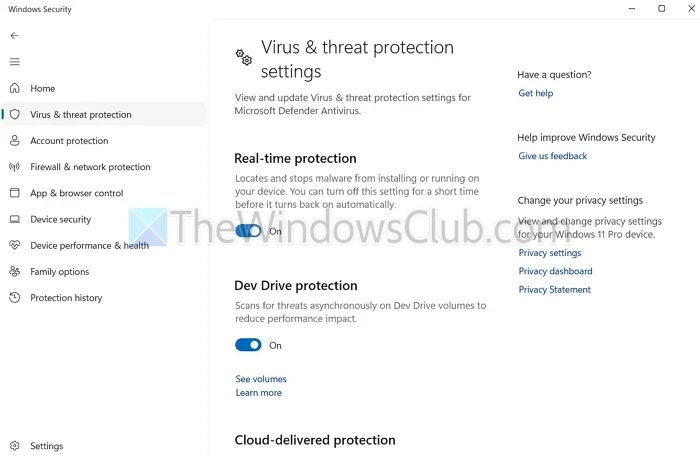
Many users have reported that their antivirus or other security software mostly causes the error. Your antivirus software is probably marking the Windows Media Creation Tool as a virus, preventing it from running or functioning properly.
To fix this, you can simply disable your antivirus program for a while, try creating a bootable media, and see if it works. To disable Windows Security, follow these steps:
- Go to Windows search, type Windows Security, and open it.
- Click on Virus & threat protection from the sidebar.
- Click on Manage settings under Virus & threat protection settings.
- Finally, turn off Real-time protection.
2] Format the USB drive to NTFS
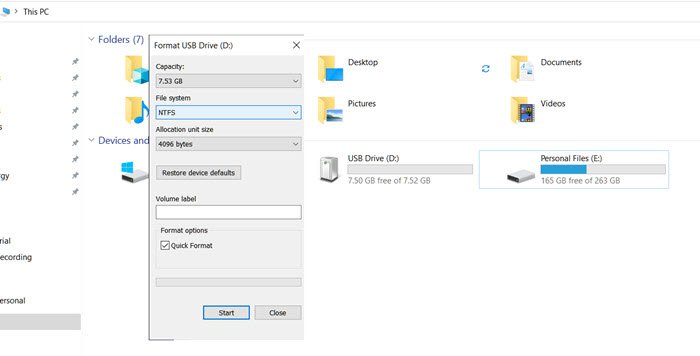
Make sure your USB flash drive is using the NTFS file format, as the Media Creation Tool requires it. Also, NTFS supports advanced file permissions and security settings.
To format your USB drive, follow these steps:
- Press Windows + E to open File Explorer.
- Right-click on your USB drive and select Format.
- From the File System dropdown, select NTFS.
- Check Quick Format, then click Start and OK to confirm.
3] Unblock the Media Creation Tool
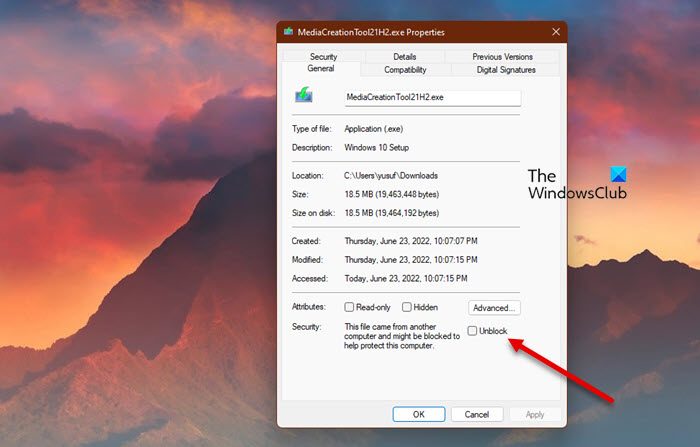
You should also check whether the Media Creation Tool is blocked or not. If the tool is blocked, unblock it and then try to create a bootable media.
- First, right-click on the Media Creation Tool .exe file and select Properties.
- At the bottom, next to Security, check if Unblock is ticked. If it’s selected, simply remove the check and click Apply > OK.
- Finally, proceed with Windows installation media creation.
4] Create in Clean Boot state
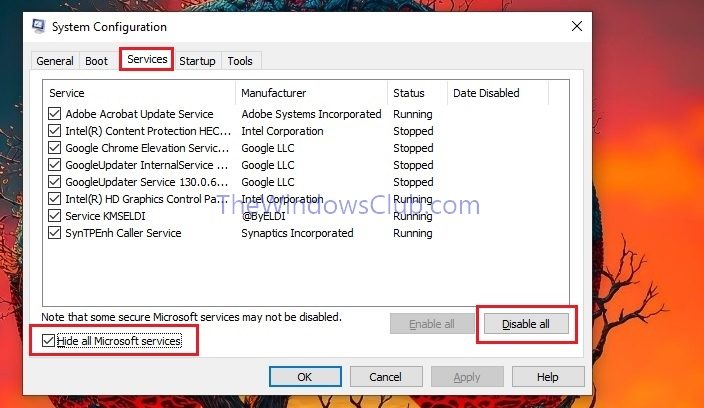
You should also try performing a clean boot, which will help eliminate software conflicts. Here’s how to do it:
- Press Windows Key + R, type msconfig, and press Enter.
- Go to the Services tab and check Hide all Microsoft services at the bottom.
- Click Disable all and then Apply.
- Next, go to Windows Search, type Task Manager, and open it.
- Go to the Startup tab and disable unnecessary programs by right-clicking on the app and selecting Disable.
- Restart your computer to apply the changes. You should now be in Clean Boot mode.
5] Use an alternative tool like Rufus
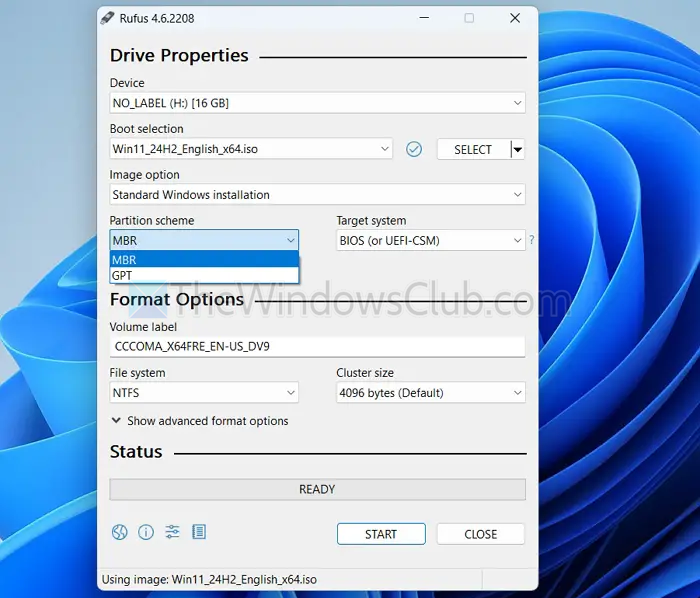
If the Windows Media Creation Tool doesn’t work and you keep getting the 0x80070005 – 0xA001B error code, consider using a third-party tool like Rufus. This tool will help you flash an ISO file to your USB drive.
To do this, first download the Windows ISO file from its official website. Then follow these steps:
- Download and run Rufus.
- From Rufus, select your USB drive.
- Click on the Select button and choose the ISO file.
- Finally, click on Start to create a bootable drive.
Read :How to fix RUFUS not working in Windows 11
These are some quick ways to fix and get rid of the Media Creation Tool error 0x80070005 – 0xA001B. The issue is likely due to USB drive formatting or security software conflicts, so address these first. Alternatively, you can use a third-party bootable media creation tool.
Related: Error code 0x80080005 – 0x90018, There was a problem running this tool
Do I need to use an NTFS-formatted USB drive for the Media Creation Tool?
While FAT32 can work, NTFS provides better compatibility for larger files and security permissions. If you face this error, try formatting your USB drive to NTFS before using the Media Creation Tool.
Will performing a clean boot delete my files or installed programs?
A clean boot only disables non-Microsoft services and startup programs temporarily. It does not delete any files or programs. After troubleshooting, you can revert the changes by enabling the disabled services and startup items.